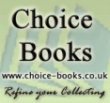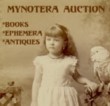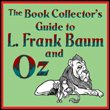|
|
|


Bookselling in the 21st Century
by Craig Stark
11 January 2010
|
Think about this for a moment: What is the likelihood that the antiques market will go away during our lifetimes? Or even suffer a major decline? Slim to none, in my opinion, especially since "new" antiques are born every day. Easy. But ask the same question about the book market, and we might hesitate, qualify our answer, or even predict that it will head south in a big way. Maybe not so easy.
The good news here is that the antiques market and the book market overlap to some extent, and if we broaden this discussion to include items that are purchased primarily for decorative purposes, it's clear that we've hit upon a bookselling niche that will almost certainly remain strong for decades to come - books purchased for decoration.
More good news: Decorative books are pretty much a no-brainer for us to spot. We may not know if a particular book has significant value, but if it's pretty, we at least know that it has some value on that basis alone.
Ten things to consider marketing as decorative items:
- Old books. By this I mean books that simply by virtue of their advanced age possess an antique aura. The older the better.
- Victorian-era bindings. These are a subset of old books, but I'm singling them out because they are especially sought after as shelf decoration. The Victorian Era as such comprises the years 1837-1901, but it was during the latter part of the this period that much effort was exerted by publishers to produce highly (sometimes wildly) decorative bindings.
- Leather bindings. Age doesn't necessarily figure into this. Even modern productions issued by The Easton Press, The Franklin Library, etc., command values largely on the basis of their appearance.
- Slipcases. If a publisher went to the trouble of producing a slipcase for a book, there's a good chance it'll look nice on a shelf. A few examples: The First Edition Library, The Folio Society, The Heritage Press, The Limited Editions Club, and so on.
- Sets. Sets of books often look nice on shelves too - they possess a presence - but you'll need to pick your spots. Encyclopedias, for example, unless they're quite old, appear more dated or tired than anything else. And some sets are just tacky. I won't name any names.
- Large books. On a shelf above my desk I have a 3-volume set of
Webster's Third New International Dictionary, a 2-volume set of The Compact Edition of the Oxford English Dictionary, a 2-volume facsimile set
of Noah Webster's 1828 edition of An American Dictionary of the English Language and a copy of Webster's New International Dictionary (Second Edition) bound in one massive volume. Take my word for it, they look cool together.
- Small books. Small or miniature books, which might otherwise be "lost" in shelving, are often effectively displayed in small, book-ended groupings on tables. You could do worse than offer a small group of small books along with some interesting bookends, which often can be had for next to nothing at sales.
- Color. Booksellers don't often exploit this opportunity, but grouping books that fall into a relatively tight color range - for example, whites, creams and ivories - will appeal to many interior decorators and can create a stunning effect.
- Publisher. I'm not a huge Modern Library (or Everyman's Library) fan, but a presentation of a reasonably large grouping of these, especially in dust jackets, is pretty darn impressive - in this case, that is, there's strength in numbers.
- Vintage dust jackets. Speaking of dust jackets, decorative dust jackets truly came into their own in the 1920s and 1930s, and a shelf or two of them is very attractive.
And of course there are many more possibilities.
Want to read more articles by
BookThink's Editor in Chief Craig Stark?
Click
here.
|
|







|
|












|


